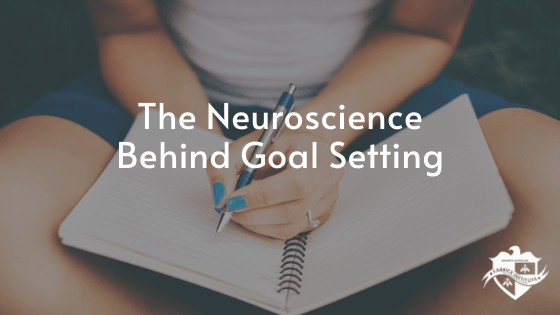Why does setting a clear goal seem to magically make things appear in your life to help you get there? It’s not magic, it’s neuroscience.
Our brains are constantly bombarded with billions of bits of information from our environment, and it is our brain’s job to process it all without overwhelming us. How does our brain decide what to turn our attention to and what to disregard? Part of the answer lies within a network called the reticular activating system.

Think of the reticular activating system as a filter for incoming sensory information – it automatically shifts our conscious awareness and attention to only what is important. Your reticular activating system is the reason you can tune out the humming of the AC unit in your home, but instantly snap to attention if you hear your name.
In the book “The Organized Brain”, Daniel J Leviton, PhD writes:
“Millions of neurons are constantly monitoring the environment to select the most important things for us to focus on. These neurons are collectively the attentional filter. They work largely in the background, outside of our conscious awareness. This is why most of the perceptual detritus of our daily lives doesn’t register, or why, when you’ve been driving on the freeway for several hours at a stretch, you don’t remember much fo the scenery that has whizzed by: Your attentional systems “protects” you from registering it because it isn’t important.”
So what about all the things that magically appear in our lives to get us to our goals? We start to see signs everywhere that we did not see before. Maybe it is not so much that they appeared, but that they were always present and we just filter it out until it becomes relevant to us.
How do we use this knowledge of the Reticular Activating System to our advantage? One way that everyone could use this in large is to clearly define your goals and WHAT you want your attention to go towards. Want to start a philanthropic effort in your community? Set that goal for yourself, write and down and create a plan of action, and suddenly you will start noticing connections in conversations and seeing different avenues in your environment to navigate towards that goal. For patients, focusing on getting healthy and feeling healthy, stating exactly what they want to achieve from care and their goals of care, rather than being stuck in pain or discomfort, can help redirect their attention to better choices and routes within their healthcare journey.
References:
- Audiffren, Michel. “The reticular-activating hypofrontality (RAH) model of acute exercise: Current data and future perspectives.” (2016).
- Garcia-Rill E, Kezunovic N, Hyde J, Simon C, Beck P, Urbano FJ. Coherence and frequency in the reticular activating system (RAS). Sleep Med Rev. 2013;17(3):227–238. doi:10.1016/j.smrv.2012.06.002



